Hundreds of years ago, the Vietnamese, who reclaimed land along the Cuu Long River, created outstanding dishes thanks to the wonderful cooking skills of the Vietnamese women. Pomelo Che is one of those miraculous dishes because the pomelo pith, which is usually considered useless, in the skillful hands of the cook was made into an elegant and savory dessert. It is said that the pomelo Che is very easy to cook; however, the hardest part in making this dish is treating the pomelo pith so that the bitterness, sourness and saltiness are fully removed, but the pungent taste of its essential oil still remains. It is very important that the crispy-yet-tender characteristics of the peel
and the side ingredient, the green beans, can still be recognized easily. Moreover, the coconut milk should be a little bit salty to enrich the sweet and fatty flavor of the newly squeezed coconut milk. The last but not least important technique is the skill to pour the coconut milk on the surface of the Che to create a milky layer, which spreads out in the shape of a flower, a star or even a charming pattern. Nowadays, pomelo Che can be found nearly everywhere in Vietnam from the North to the South. Eating Che after classes is a popular image of Vietnamese students. Therefore, this dish contains not only an elegant, sweet taste but also lots and lots of memories of Vietnamese pupils.
POMELO CHE
Print ThisIngredients
- INGREDIENTS FOR THE CHE
- 200g pomelo pith
- 10g salt
- 5 liters water
- 50g sugar
- 2 drops of pomelo
- flower extract
- 200g tapioca flour
- 250g rock sugar
- 3 pandan leaves
- 100g unshelled mung beans
- 10g alum
- INGREDIENTS FOR THE COCONUT MILK
- 500g grated coconut meat
- 300ml warm water
- 5g sugar
- 1g salt
- 5g tapioca flour
- 100g roasted peanuts
- 2 tubes of vanilla powder
Instructions
PROCESS
Preparation: Peel the pomelo to get the pith, cut them into 1cm cubes, mix them with 10g of salt and leave them to marinate for 2 to 3 hours. Then knead them thoroughly, clean them with cold water for several times to get rid of their bitter taste.

Boil 2l of water, continue to add the alum and cook until it is completely dissolved. Add the cubes of pomelo pith and quickly boil them on high heat until they are boiled again, transfer the pomelo pith into a big bowl and carefully clean them until their sourness and the saltiness are removed. Then wring out excess water in them. Soak the unshelled mung beans in water for about 2 hours until they rise, mix them with a little bit of salt then steam them.
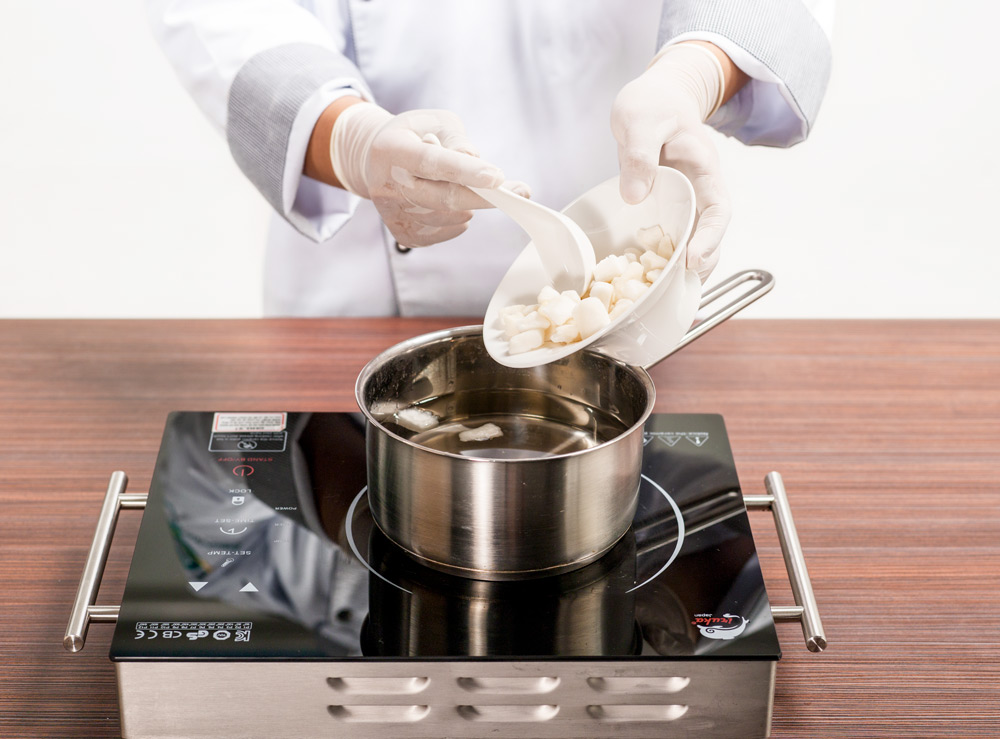
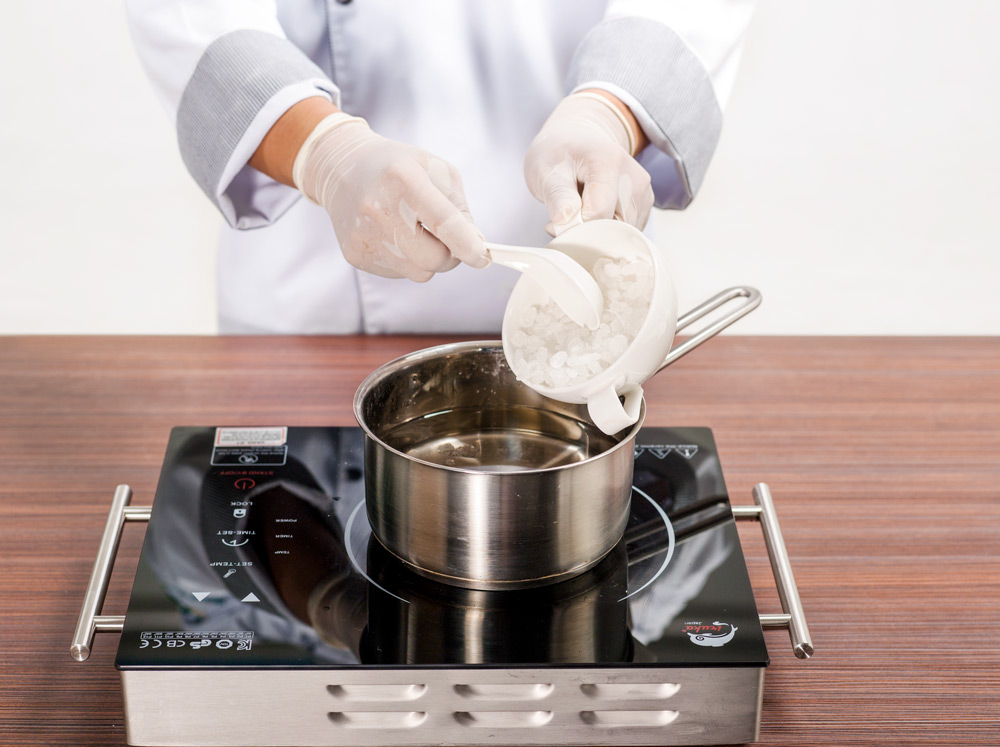
Coat the pomelo pith pieces with tapioca flour then boil them: Put the prepared pomelo pith cubes into a saucepan, marinate them with 50g of sugar and a drop of pomelo flower extract, and mix them thoroughly until the sugar is dissolved. Pour about 10ml of water into the saucepan, cook on a low heat so that the pith may fully absorb the sugar. Turn off the heat, sprinkle 50g of tapioca flour over the hot pomelo pith then quickly mix them to get a coating. Continue to add 50g of tapioca flour so that the pith cubes are thickly and evenly coated. Boil 2 liters of water, then put the pomelo pith cubes in and boil them until they float onto the surface of the water, then take them out and soak them in water with some ice, wait until they have cooled down, take them out and drain them.
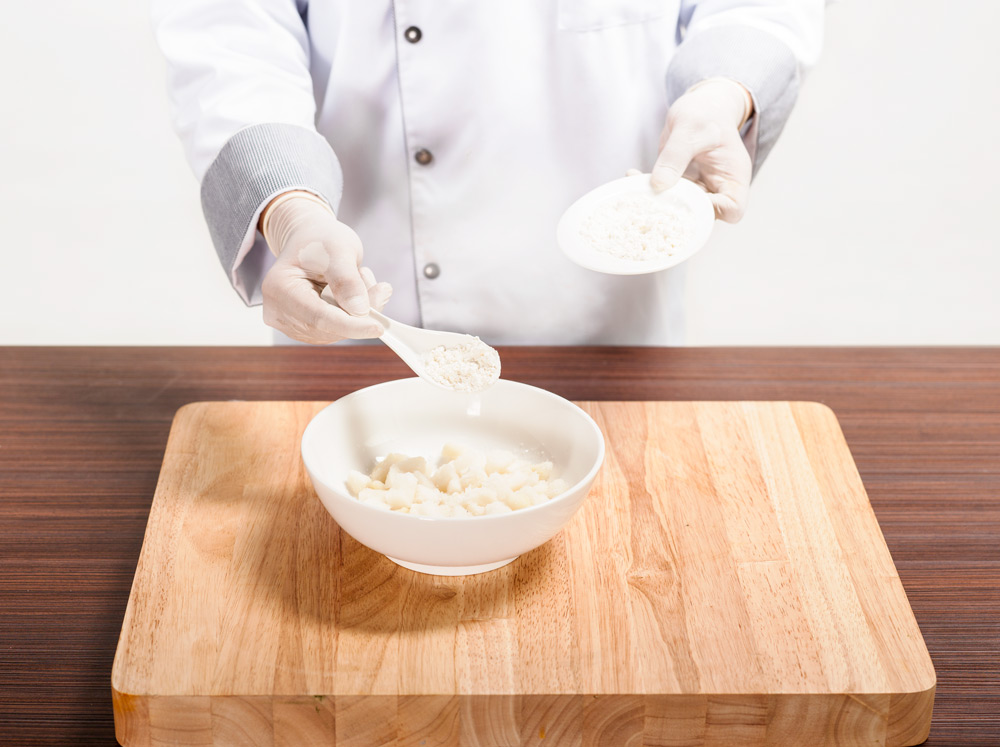
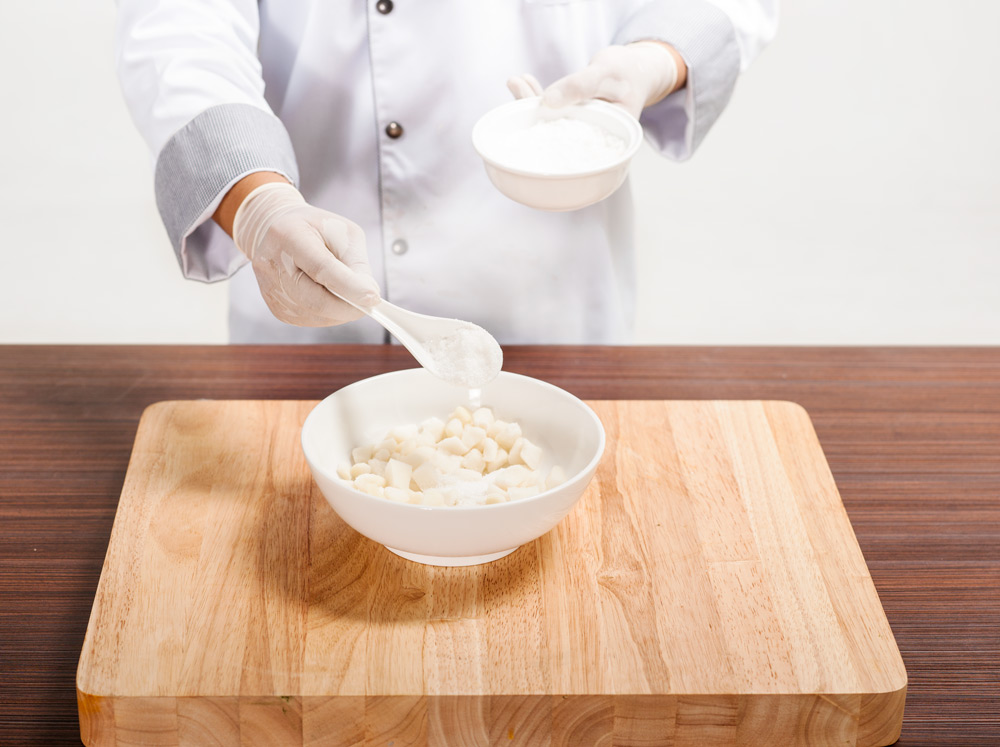
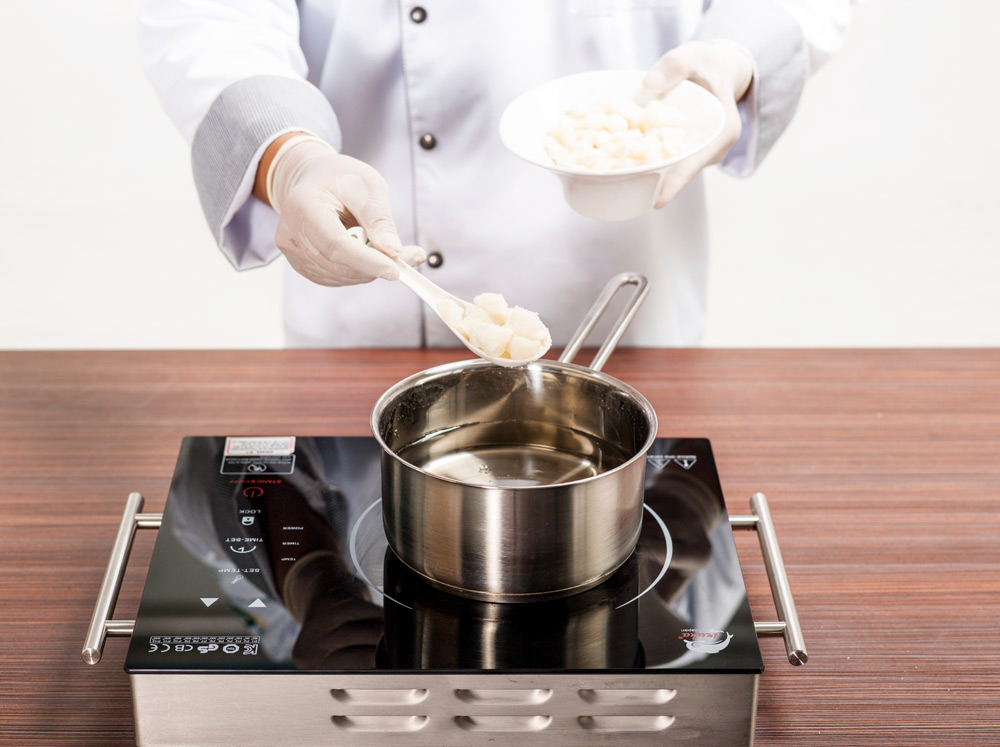
Cook the Che: Boil 1l of water together with 3 pandan leaves and 250g of rock sugar, cook them until the sugar is dissolved and the water boils. Add the mung beans and the pomelo pith and cook them until the mixture boils again. Tip 100g of tapioca flour into a bowl and add some water until it becomes thickened, slowly pour it into the boiling sugar water, stir constantly until the flour is cooked, and turns transparent and the Che has a gelatinous texture and all the ingredients are blended together. Turn off the heat and add the remaining drop of pomelo flower extract.
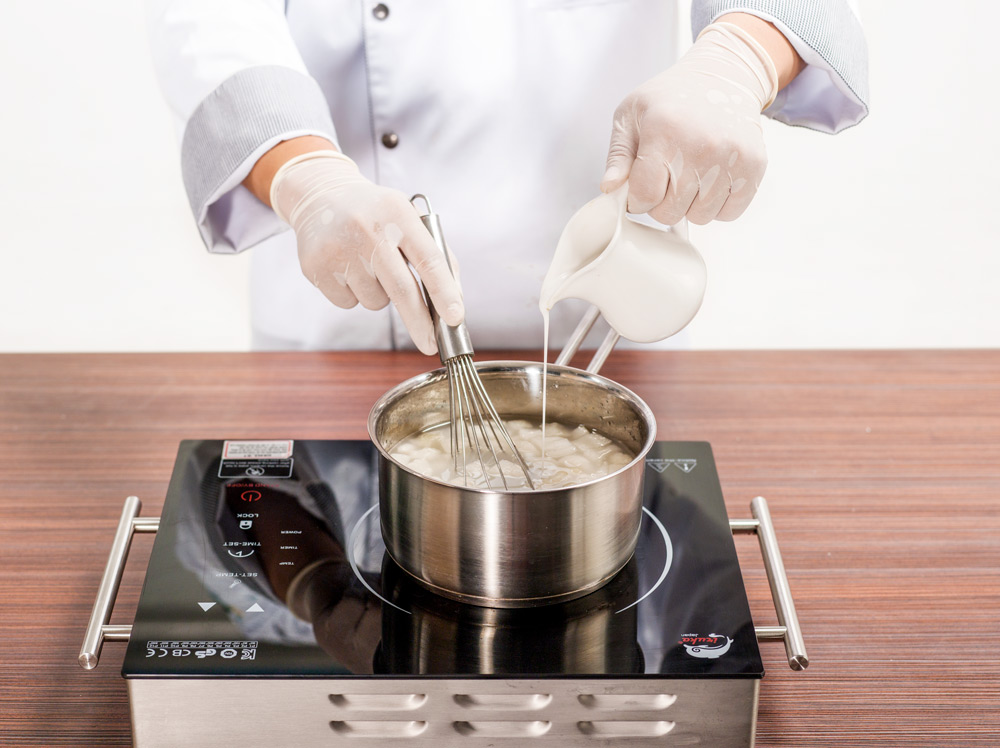
Make the coconut milk: Add 500g of grated coconut flesh, mix them with 300ml of warm water then squeeze them for 300ml of coconut extract. Pour the extract into the saucepan, add 5g of sugar, 1g of salt and 5g of dissolved tapioca starch. Cook the mixture on rather low heat and slightly stir it until the starch is cooked, the soup is transparent and has a gelatinous texture. Finally, add the vanilla and turn off the heat.

PRESENTATION
Spoon the sweet soup into a small bowl, spoon over a little coconut milk and sprinkle the roasted peanuts on the surface (this dish can be served hot or cold).
QUALITY CHECK
The Che should be transparent and slightly gelatinous; the pomelo pith should be crispy and the coating should have a chewy texture. The dish should be elegantly sweet and have a creamy and fragrant taste of the coconut milk and the peanuts.
TIPS
Choose the freshly picked pomelo. The pomelo shouldn’t be ripe because the pith of a ripe one is very fibrous.
Clean the pomelo pith many times to eliminate its bitterness.
Soak the pith in the lye of cottonwood tree so that it may have a white color and a crispy texture. (You shouldn’t use non- organic lye).
Either cornstarch or tapioca flour can be used.
Don’t squeeze too much water out of the pith because it may become rubbery and fibrous.
Pomelo pith, after being covered with sugar, should be put in refrigerator to retain its crispness.
EFFECTS OF THIS DISH
This dish is very nutritious, and provides lots of energy, minerals and vitamins. It helps enhance energy, remove phlegm, reduce coughing, regulate Qi, increase urine output, enhance digestion, reduce the poisoning and the body heat, remove common cold, protect capillary walls, reduce bad blood cholesterol, lower blood pressure, relieve pain, and prevent nausea and car sickness. This dish is very helpful for people with asthenia, high blood cholesterol and high blood pressure, indigestion; it is good for children with measles, people who cough with profuse sputum, people with high body heat, joint pain, constipation, difficult urination, or dark yellow urine output, and it prevents stroke. However, because the water chestnut has a cooling property, people with damaged spleen and kidney, cold body, cold hands and feet, who are susceptible to coldness, diarrhea and children with enuresis should not consume this dish.
NUTRITION FACTS

Notes
TRAN NGOC NGHIA Tien Loc Wedding Restaurant (Dong Nai Province) Runner-up in the Golden Spoon Awards 2013



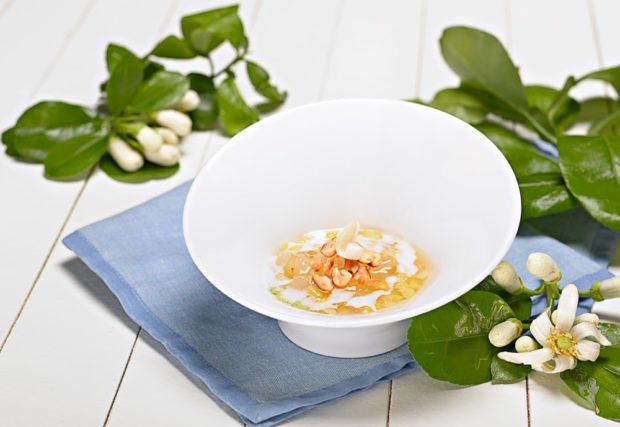

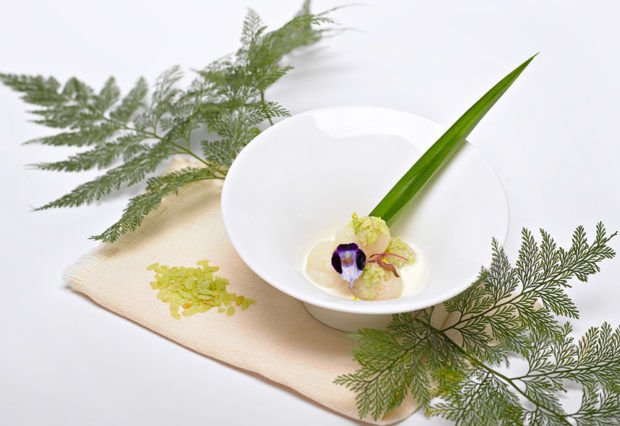
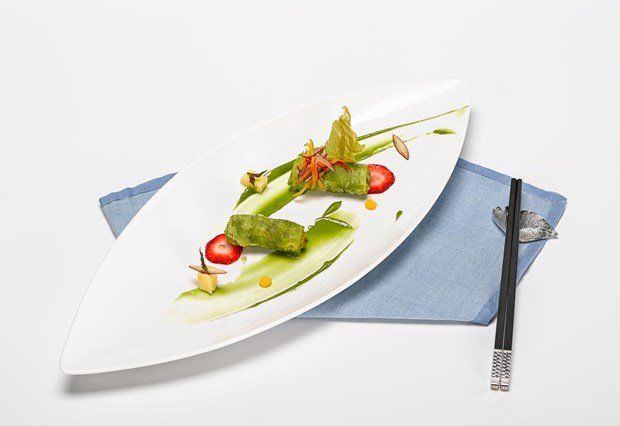
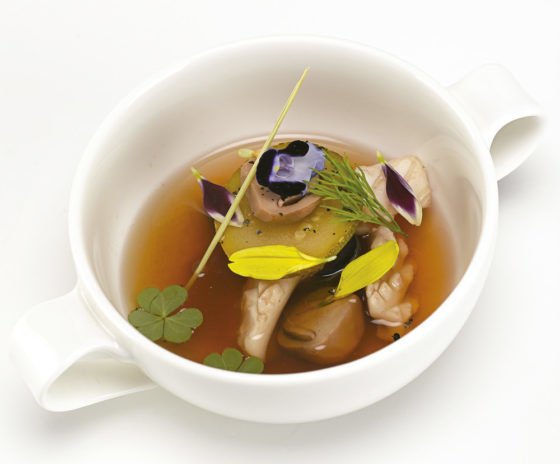
No Comments